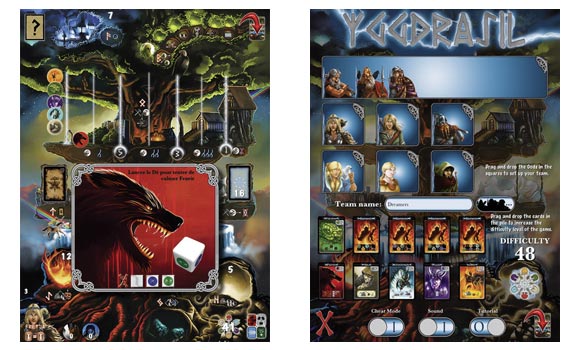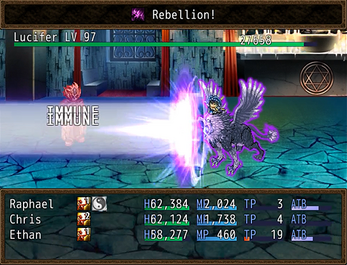
Furthermore, the game relies on a fair amount of iconography meaning plenty of trips back to the rule book in early play-throughs. At first glance the standees can look very similar, often getting lost in the midst of the busy 3D tree. Setup can be a bit of a chore and there are some discrepancies between the quality of some of the design choices and components. Whilst the game succeeds at providing a unique and challenging thematic experience, it is not without its faults. Each chapter of the campaign also introduces new components and mechanics which helps keep things fresh whilst piling on the tension. Stretching over six games made up of various ‘steps,’ the campaign game lays out new win conditions which players must fulfi l before Nidhogg comes to a punishing halt. Making things even more interesting is the campaign mode. In an easy game, Nidhogg skips along the track without too many hiccups - perfect for getting a grasp on the rules - whereas hard mode has players dealing with multiple enemy activations as the game advances. Nidhogg’s movement also plays into the game’s various modes. There’s a Pandemic-esque tension to this mechanism, relieved only by the appearance of Nidhogg, whose movements along the track in the game’s saga book usually push the players ever closer to victory.
#Yggdrasil rpg game full
If ever an enemy can’t carry out it’s action - either by invading Asgard or reaching their full strength - the game is lost, reducing Yggdrasil to ashes. Whenever two matching enemies appear on the wheel, that enemy will activate. The chosen first player will then reveal their card and place it in the wheel’s corresponding slot. At the start of each turn all players will play the top card of their personal enemy deck to the centre of the wheel facedown. Yggdrasil Chronicles makes use of an innovative ‘wheel’ system to handle the encroaching evil forces. Loki, for example, appears out of nowhere on the active player’s location, summoning Frost Giants to meddle throughout the nine worlds and increase his strength. It’s thematic too, with each unique enemy activation cleverly evoking aspects of Norse lore. Turn-by-turn gameplay is dynamic and tactile, as standees and meeples flitter about the tree and its rotating mid section. Often players will make use of the various action spaces on each world, which can empower the gods with mighty artefacts, Elven warriors, or aid from brave heroes bound for Valhalla. If a god is ever reduced to zero health all players lose. Being on the same world as an enemy offers the opportunity to fight and repel, but combat can be a dangerous business. Turns will usually involve moving around the board and preventing certain enemies from either advancing too far up the tree or becoming too powerful. As one of seven gods, each player will take turns in any order as they fight against evil forces invading the nine worlds of Yggdrasil. Yggdrasil Chronicles is a cooperative game for one to five players. It’s certainly got our attention, but how does it play? Like a totem honouring the exciting world of modern board gaming, Yggdrasil Chronicles’ World Tree stands tall and proud, its branches grasping out at inquisitive passers by and sprouting seeds of curiosity. Not content with merely transcending realms, publisher Ludonaute has opted to transcend dimensions, with gameplay bounding to life atop a new 3D board. More than a fresh lick of paint, Yggdrasil Chronicles comes packed with new mechanics, campaign play and a gloriously imposing new look. Hot from Essen this year is Cédric Lefebvre’s bold reimagining of 2011’s much lauded but long out of print Yggdrasil. Together, the mighty norse gods of Asgard must prevail against the imminent onslaught and save Yggdrasil, the world tree. Fenrir is set to bound from his cage whilst other unyielding forces of evil descend upon the nine worlds.

Along those lines, I’d like to announce the 6th Edition of the SAGA Core Rulebook and a newer, more polished default character sheet.The time for Ragnorok is nigh. However, I’m still passionate about my roleplaying system, SAGA, and I have every intention of continuing to put out new material periodically.

I don’t really care about continuing to slog out political writings, as there’s already an ample body of work regarding anarchism, primitivism, etc., so I don’t feel it’s necessary for me to contribute to that realm anymore. That said, I do intend to continue producing SAGA materials. I’ve been busy with other projects and learning new skills in the material world, and, largely, have moved toward living in/on/with wilder landbases, and thus, haven’t been writing and publishing a lot. I’ve taken an extremely long hiatus from writing and publishing, but not to worry! I’ve returned.


 0 kommentar(er)
0 kommentar(er)
